This article was medically reviewed by Janice Litza, MD. Dr. Litza is a board certified Family Medicine Physician in Wisconsin. She is a practicing Physician and taught as a Clinical Professor for 13 years, after receiving her MD from the University of Wisconsin-Madison School of Medicine and Public Health in 1998.
There are 11 references cited in this article, which can be found at the bottom of the page.
This article has been viewed 147,150 times.
Experts say ganglion cysts may go away on their own, but you may need medical treatment if your cyst is painful or interferes with your wrist movements.[1] Ganglion cysts are round or oval fluid-filled lumps that develop on your tendons or in your joints in your wrists or hands, though they may also form on your ankles or feet. Research suggests that your healthcare provider may try immobilizing your wrist or draining a bothersome cyst to give you relief, but you may need surgery if your symptoms still persist.[2] Generally, ganglion cysts are benign, but talk to your healthcare provider if you're worried.
Steps
Diagnosing Your Ganglion Cyst
-
1Identify a ganglion cyst. They are most common in women between 20 and 40 years old, in people with osteoarthritis in the finger joints, or a history of joint or tendon injuries. You might have a ganglion cyst if you have:[3] [4]
- A lump on the tendons of your wrist or hands. These cysts may also form in the joints of the wrist, hands, feet, ankles or elsewhere.
- A lump that is round or oval shaped. Most are smaller than an inch across. The size may change overtime, with it getting bigger when you use the nearby joint.
- Pain. Even a cyst that is too small to see may cause discomfort, numbness, weakness, or a pins-and-needles sensation if it presses on a nerve.
-
2Have a doctor check the cyst. The doctor will likely do several things to confirm that it is a ganglion cyst. There are different types of cysts that have different types of treatment and emphasis need correct diagnosis. Other skin types cysts are sebaceous cysts, lipomas, infectious abscesses, enlarged lymph nodes, tumors, etc. The doctor may:[5] [6]
- Press on the cyst to see if it is sore.
- Shine a light through the cyst to see if it is solid or fluid-filled.
- Aspirate fluid out of the cyst using a needle and syringe. If it is a ganglion cyst, the fluid will be clear.
Advertisement -
3Get imaging tests if your doctor recommends it. Imaging tests can detect small cysts that are not visible from outside the body and rule out other diagnoses like arthritis or cancer. The doctor may suggest:[7] [8]
- An x-ray. This test does not hurt, but it is important that you tell your doctor if you are pregnant or think you could be pregnant.
- An ultrasound. This test is painless and involves using sound waves to form an image of the inside of your body.
- Magnetic resonance imaging (MRI). This test uses magnets and radio waves to create three dimensional images of the cyst. You will lie on a table that moves into the MRI tube. It is loud, but it does not hurt. Tell your doctor ahead of time if you have claustrophobia.[9]
Treating the Cyst at the Doctor
-
1
-
2Try immobilization. The doctor may put a brace or splint around the joint near the cyst to prevent you from moving that joint. Because the cysts often get larger when you move your joint, restricting the movement sometimes enables the cysts to shrink.[12] [13]
- If you use this approach, ask your doctor how long you can wear the brace or splint before your muscles will start to lose their strength.
- If the cyst is uncomfortable, your doctor may recommend that you take a painkiller, such as Ibuprofen.
-
3Drain the cyst with aspiration. During this procedure the doctor will use a needle to suck the fluid out of the cyst. This procedure provides quick relief, but the cyst may reoccur.[14]
- The doctor may suggest injecting a steroid into the area to reduce the risk of reoccurrence, but there is no evidence that this successfully reduces reoccurrences.
- This is an outpatient procedure. You will be released the same day with a Band Aid over the location where the needle went through your skin.
-
4Get surgery. This is generally a last resort after the other options were unsuccessful. The surgeon cuts out the cyst and the stalk where it connects to the joint or tendon.[15] Though surgery is the most effective treatment, some cysts do still reform after surgery.[16] There are two equally effective surgical procedures that are used.[17]
- Open surgery — During this procedure, the surgeon makes a cut about 2 inches long over the cyst and removes it.
- Arthroscopic surgery —This is a type of keyhole surgery. The doctor makes a small incision and inserts a camera and other instruments through the incision. Using the camera as a guide, the surgeon removes the cyst.
- Both procedures can be done using either local or general anesthesia, depending upon the recommendation of your surgeon.[18]
Treating the Cyst at Home
-
1Take over-the-counter pain medication. If your doctor decides the cyst does not need to be operated on or if you would like to try home treatment for the cyst, you should consider taking OTC pain medication. Ibuprofen or naproxen sodium can help to dull the pain of the cyst.[19]
- You may also take OTC pain medication during a period of observation, during which you will leave the cyst alone and return to the doctor’s office later for periodic observation. This is often done if the ganglion cyst does not appear to be cancerous or the result of any other serious medical issues.[20]
-
2Modify your shoes if the cyst is on your foot or toe. If the cyst is located on your foot or your toe, you should avoid wearing shoes that will squeeze or constrict the cyst. You may decide to wear open-toed shoes or flip flops so the cyst is able to heal on its own.[21]
- If you must wear closed-toe shoes, you should tie the laces or straps looser than usual so the cyst does not get irritated when you walk. Avoid wearing shoes with tight zippers and made of non-breathable fabric, like leather or polyester, as this can irritate the cyst.
-
3Do not thump or drain the cyst yourself. There is an old remedy for ganglion cysts that consists of hitting or thumping the cyst hard with a heavy object. Avoid doing this, as it will likely only damage the tissue around the cyst.[22]
- You should also never try to pop or drain the cyst yourself at home by puncturing it with a needle. This will likely only make the cyst worse and could lead to an infection.
Expert Q&A
-
QuestionI have a painful cyst on my foot and want to use frankincense oil, how do I use it?
 Janice Litza, MDDr. Litza is a board certified Family Medicine Physician in Wisconsin. She is a practicing Physician and taught as a Clinical Professor for 13 years, after receiving her MD from the University of Wisconsin-Madison School of Medicine and Public Health in 1998.
Janice Litza, MDDr. Litza is a board certified Family Medicine Physician in Wisconsin. She is a practicing Physician and taught as a Clinical Professor for 13 years, after receiving her MD from the University of Wisconsin-Madison School of Medicine and Public Health in 1998.
Board Certified Family Medicine Physician There are many types of cysts and if it is painful, discolored, or draining, you should have it evaluated before you put any essential oils on it. If it is a ganglion cyst, frankincense would not be effective as it is usually most effective on more superficial skin lesions, not deeper cysts.
There are many types of cysts and if it is painful, discolored, or draining, you should have it evaluated before you put any essential oils on it. If it is a ganglion cyst, frankincense would not be effective as it is usually most effective on more superficial skin lesions, not deeper cysts.
References
- ↑ https://www.mayoclinic.org/diseases-conditions/ganglion-cyst/symptoms-causes/syc-20351156
- ↑ https://orthoinfo.aaos.org/en/diseases--conditions/ganglion-cyst-of-the-wrist-and-hand/
- ↑ http://www.mayoclinic.org/diseases-conditions/ganglion-cyst/symptoms-causes/dxc-20168589
- ↑ https://my.clevelandclinic.org/services/orthopaedics-rheumatology/diseases-conditions/hic-ganglion-cysts
- ↑ http://www.mayoclinic.org/diseases-conditions/ganglion-cyst/diagnosis-treatment/diagnosis/dxc-20168595
- ↑ https://my.clevelandclinic.org/services/orthopaedics-rheumatology/diseases-conditions/hic-ganglion-cysts
- ↑ http://www.mayoclinic.org/diseases-conditions/ganglion-cyst/diagnosis-treatment/diagnosis/dxc-20168595
- ↑ https://my.clevelandclinic.org/services/orthopaedics-rheumatology/diseases-conditions/hic-ganglion-cysts
- ↑ http://www.mayoclinic.org/tests-procedures/mri/basics/what-you-can-expect/prc-20012903
- ↑ http://www.mayoclinic.org/diseases-conditions/ganglion-cyst/diagnosis-treatment/treatment/txc-20168597
- ↑ https://my.clevelandclinic.org/services/orthopaedics-rheumatology/diseases-conditions/hic-ganglion-cysts
- ↑ http://www.mayoclinic.org/diseases-conditions/ganglion-cyst/diagnosis-treatment/treatment/txc-20168597
- ↑ https://my.clevelandclinic.org/services/orthopaedics-rheumatology/diseases-conditions/hic-ganglion-cysts
- ↑ http://www.nhs.uk/Conditions/excisionofganglion/Pages/Introduction.aspx
- ↑ http://www.mayoclinic.org/diseases-conditions/ganglion-cyst/diagnosis-treatment/treatment/txc-20168597
- ↑ https://my.clevelandclinic.org/services/orthopaedics-rheumatology/diseases-conditions/hic-ganglion-cysts
- ↑ http://www.nhs.uk/Conditions/excisionofganglion/Pages/Introduction.aspx
- ↑ http://www.nhs.uk/Conditions/excisionofganglion/Pages/Introduction.aspx
- ↑ http://www.mayoclinic.org/diseases-conditions/ganglion-cyst/manage/ptc-20168613
- ↑ http://orthoinfo.aaos.org/topic.cfm?topic=a00006
- ↑ http://www.mayoclinic.org/diseases-conditions/ganglion-cyst/manage/ptc-20168613
- ↑ http://www.mayoclinic.org/diseases-conditions/ganglion-cyst/manage/ptc-20168613
About This Article
To treat a ganglion cyst, start by evaluating how serious your cyst is. If the cyst is pressing on a nerve painfully, or if it's so large that you can't move the joint properly, see your doctor for treatment. Otherwise, manage the cyst at home by taking an over-the-counter pain medication and avoid pressing, thumping, or puncturing the cyst. Most cysts will naturally go away by themselves, so the hardest part is just waiting for that to happen! If your cyst is getting worse or swells to a large size, talk to your doctor about getting the cyst drained. To learn about surgery procedures that can remove the cyst, read on!
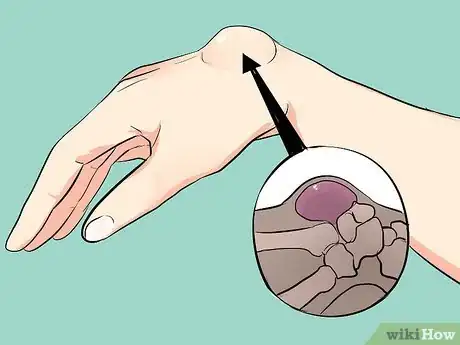
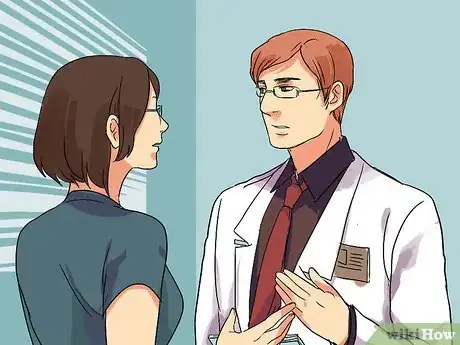

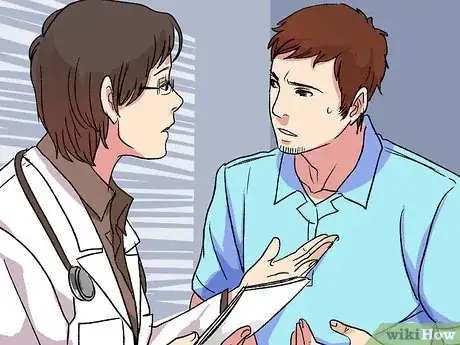
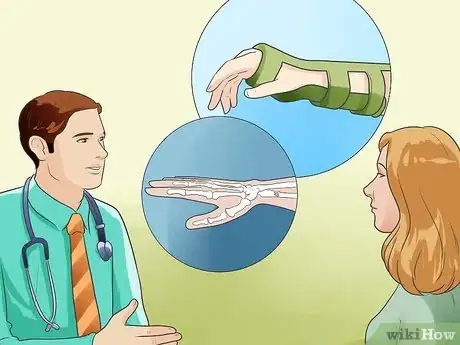
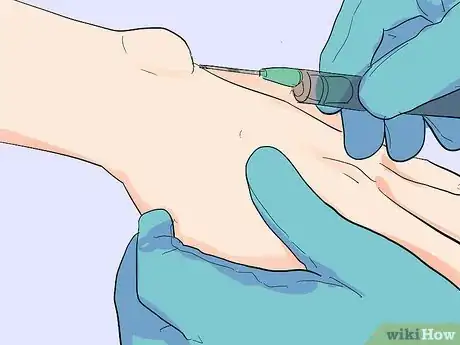
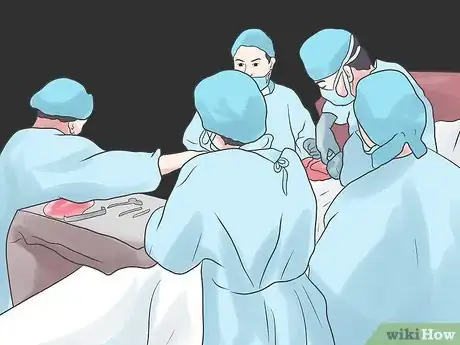

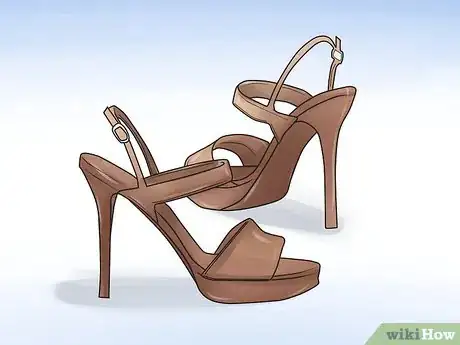


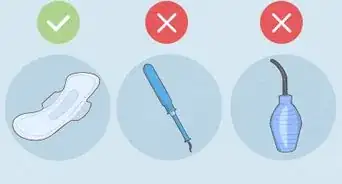


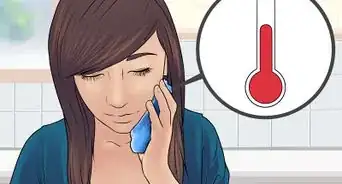


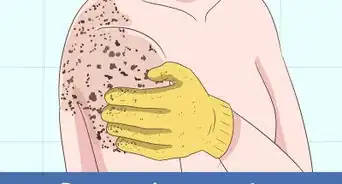


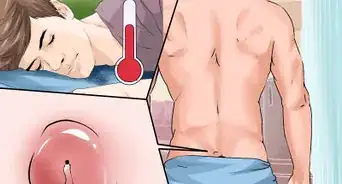
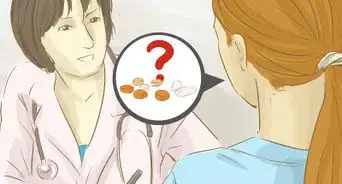
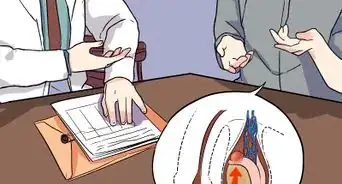









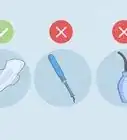

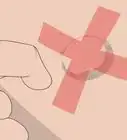



































Medical Disclaimer
The content of this article is not intended to be a substitute for professional medical advice, examination, diagnosis, or treatment. You should always contact your doctor or other qualified healthcare professional before starting, changing, or stopping any kind of health treatment.
Read More...